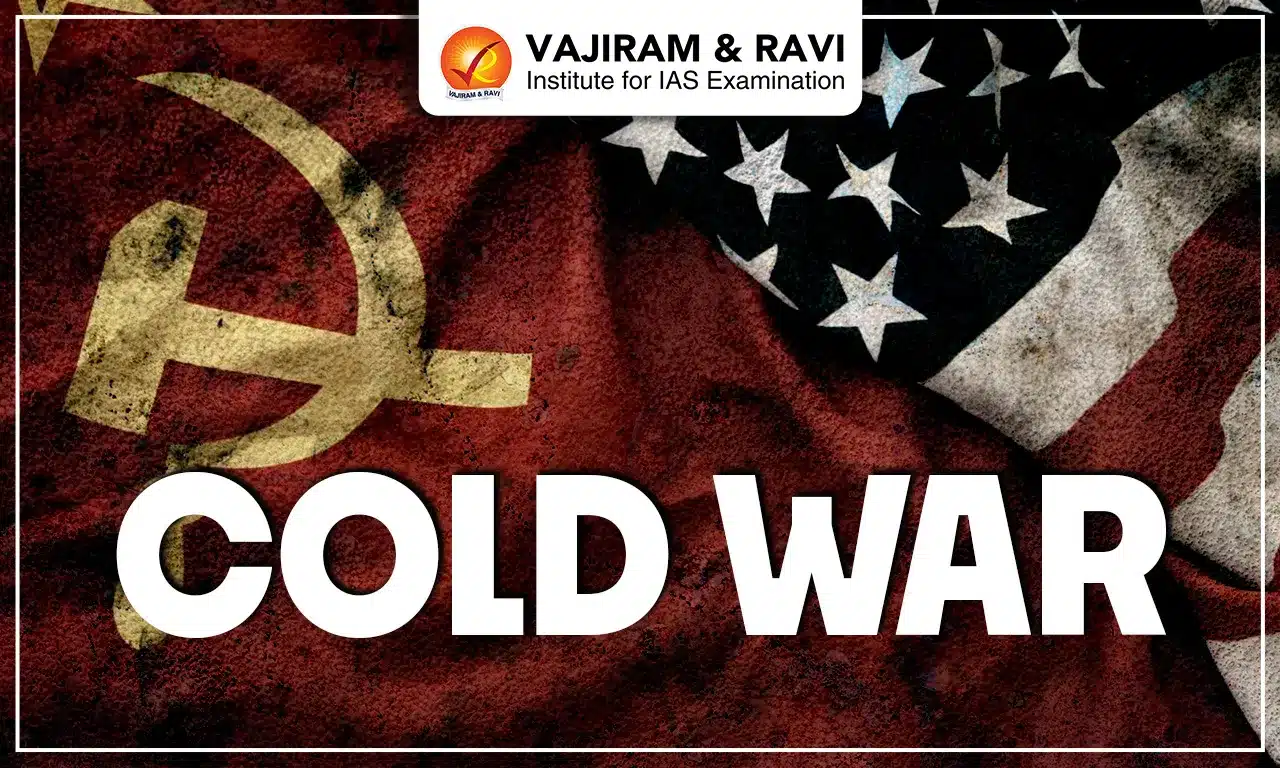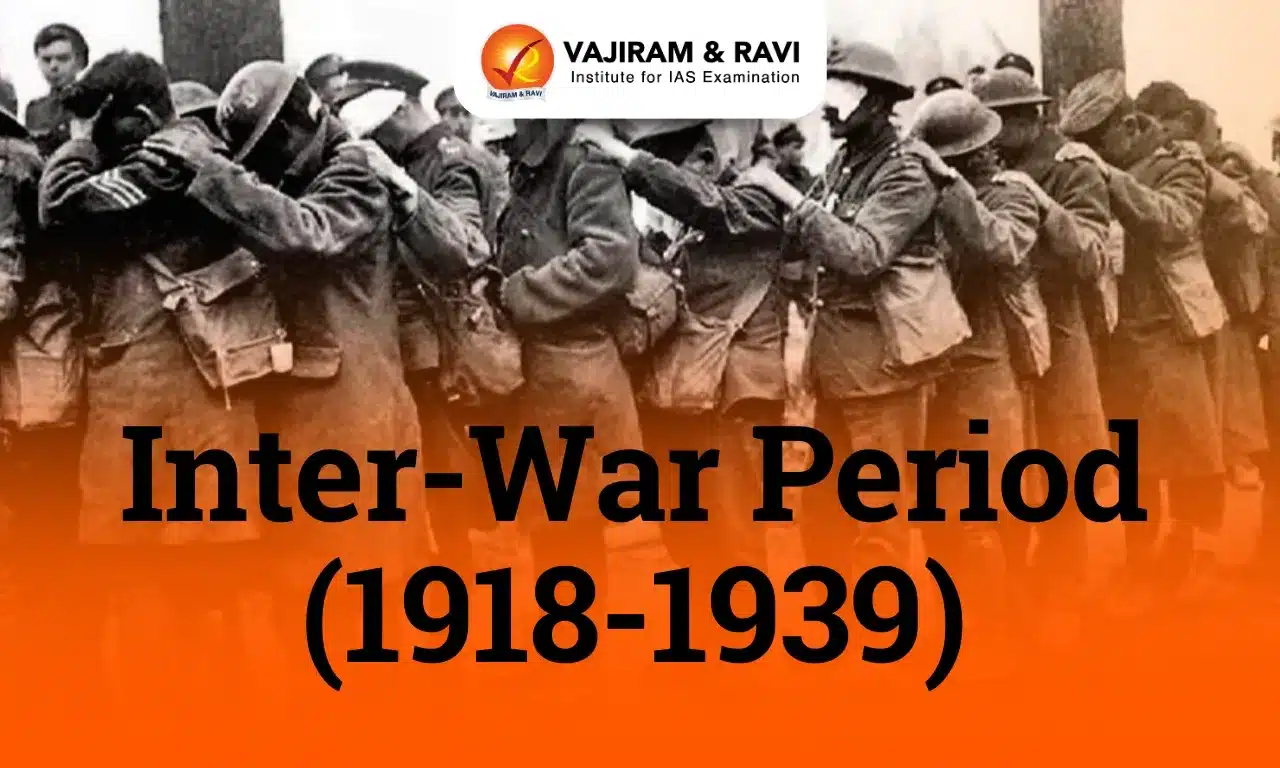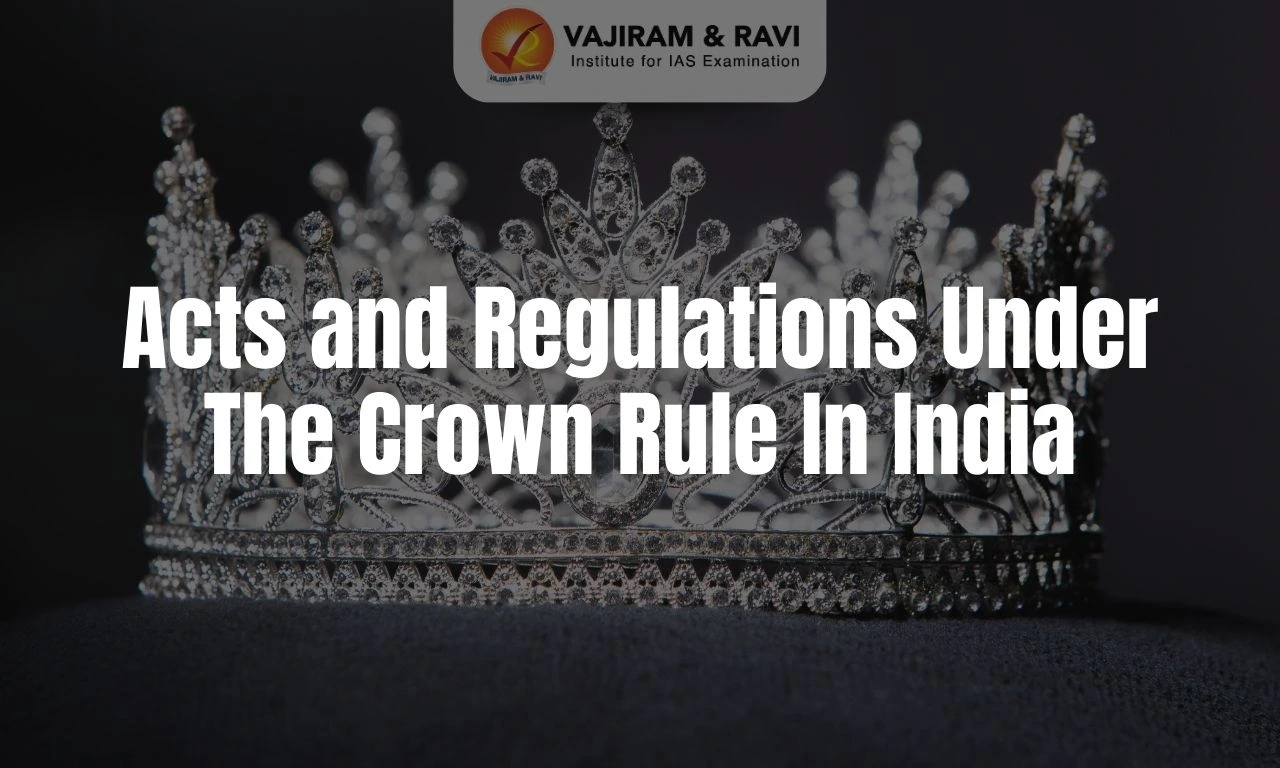The Cold War, spanning from the late 1940s to the early 1990s, was a global ideological and geopolitical struggle between the capitalist West, led by the United States, and the communist East, spearheaded by the Soviet Union. Key doctrines like containment and détente shaped the conflict. Fueled by contrasting ideologies of capitalism versus communism, the Cold War manifested through an arms race, proxy wars, and intense diplomatic tensions. Pivotal events like the Cuban Missile Crisis brought the world to the brink of nuclear war. The Cold War's impact reshaped international alliances, catalysed decolonisation, and ultimately led to the disintegration of the Soviet Union.
Factors Leading to Cold War
The Cold War emerged after WWII between the US-led Western Bloc and Soviet-led Eastern Bloc. Though never erupting into direct conflict, it involved proxy wars, espionage, arms race, and tense competition. The term "Cold War" signified the cool relationship between the former allies despite no formal war declaration or large-scale combat.
- Background: During World War II, the United States and the Soviet Union were part of the Allied forces, fighting against the Axis powers. However, despite their temporary alliance, deep-seated ideological differences and mistrust existed between the capitalist democracy of the US and the communist dictatorship of the USSR.
- As the war ended, tensions arose over the Soviet Union's domination of Eastern Europe, the US's economic support for Western Europe through the Marshall Plan, and the competing desires of both superpowers to expand their global influence.
Causes of Cold War
- Ideological differences: The U.S. and USSR had very different visions for the postwar world. The U.S. wanted to spread democracy and capitalism, while the Soviet Union sought to expand its communist ideology and influence.
- Bifurcation of Germany: After WWII, Germany was divided into East and West Germany, with the Soviet Union occupying the eastern part and the Western Allies (US, UK, France) controlling the western zones. This division epitomized the wider ideological split fueling the Cold War.
- Berlin's bifurcation, including the Berlin Blockade and Wall, made Germany's partition a potent symbol of the superpower rivalry between the US and the USSR.
- Disputes over Eastern Europe:
- The Soviet Union's installation of communist regimes in Eastern European nations like Poland, Hungary, and East Germany after WWII alarmed the West. They saw it as a violation of self-determination and an expansionist move to create a buffer zone.
- This deepened mistrust, cementing Europe's division into competing spheres of influence under the USSR's communist camp in the East and the US-led capitalist West, fueling the onset of the Cold War.
- The Truman Factor: Under President Truman, the US adopted a containment policy to curb Soviet expansionism, escalating Cold War tensions.
- The Truman Doctrine and Marshall Plan provided aid to counter communism, supporting nations resisting Soviet influence.
- This assertive stance heightened ideological divisions, fueling proxy conflicts as the superpowers sought global dominance in the emerging bipolar world order.
- Arms Race and Nuclear Weapons:
- The US and Soviet Union developed and stockpiled nuclear weapons. As a result, a fear of mutual destruction kept both sides in a state of heightened tension.
- Both sides felt the need to maintain technological and military superiority. Ensuing an arms race drained resources and heightened the risk of conflict.
- Ideological Competition for Influence: The Cold War rivalry intensified through proxy wars as the US and USSR backed opposing sides in conflicts like Korea and Vietnam, as well as through interventions and covert operations aimed at gaining political alliances and ideological influence over newly independent nations in the developing "Third World" regions.
- Lack of Mutual Trust and Communication: Both sides engaged in propaganda campaigns against each other. This lack of direct communication and understanding fueled mistrust and suspicion.
Key Doctrines and Pacts
During the Cold War era, several key doctrines and pacts were formulated by the United States and the Soviet Union, shaping the geopolitical landscape and strategic alliances.
| Doctrine | Description |
| Truman Doctrine |
- Announced by U.S. President Harry S. Truman in 1947. - Aims to contain the spread of communism. - Provides economic and military aid to countries threatened by communism, particularly in Europe. |
| Marshall Plan |
- Initiated by U.S. Secretary of State George Marshall in 1947. - Also known as the European Recovery Program. - Offers substantial financial assistance to help rebuild war-torn Europe. The underlying goal is to prevent the spread of communism. |
| NATO |
- Established in 1949 as a military alliance of Western democracies led by the United States. - Aims to counter the Soviet Union's influence in Europe through collective defence. - States that an attack on one member would be considered an attack on all. |
| Warsaw Pact |
- Formed in 1955 as a response to NATO. - A collective defence treaty between the Soviet Union and its Eastern European satellite states. - Aims to maintain Soviet dominance in the region. Serves as a counterbalance to NATO. |
| Brezhnev Doctrine |
- Introduced by Soviet leader Leonid Brezhnev in 1968. - Asserts the Soviet Union's right to militarily intervene in other socialist countries to suppress challenges to communist rule. - Used to justify the invasion of Czechoslovakia in the same year. |
| Reagan Doctrine |
- Articulated by U.S. President Ronald Reagan in the 1980s. - Aims to roll back communism and support anti-communist insurgencies worldwide. Includes increased military spending, support for anti-Soviet rebels, and the confrontational approach towards the Soviet Union. |
| Iron Curtain Doctrine |
- Refers to the policy of political and military separation between the Soviet Union and its Eastern European satellite states and the Western democracies during the Cold War. Coined by Winston Churchill in 1946. - Aims to prevent the spread of Western influence into the Soviet sphere. Involves strict border controls, information censorship, and suppression of political dissent within the Eastern Bloc. |
Important Events
The Cold War, a period of intense geopolitical rivalry and tension between the United States and the Soviet Union, was characterised by numerous significant events that shaped the global landscape.
- Berlin blockade and airlift (1948-1949):
- In June 1948, the Soviet Union imposed a blockade on West Berlin, cutting off road, rail, and water access to the Western sectors of the city.
- In response, the US and its allies organised the Berlin Airlift, which involved airlifting supplies to sustain the population of West Berlin.
- The airlift lasted for almost a year and forced the Soviets to lift the blockade, highlighting the determination of the Western powers to protect their interests in Berlin.
- Proxy wars: Instead of direct large-scale fighting, the US and USSR supported regional conflicts known as proxy wars.
- Korean War (1950-1953):
- The Korean War erupted in June 1950 when North Korea, backed by the Soviet Union and China, invaded South Korea.
- The US and its UN allies intervened to support South Korea, while China also entered the conflict on the side of North Korea.
- The war ended in a stalemate, with an armistice signed in 1953, leaving Korea divided along the 38th parallel.
- Vietnam War (1955-1975):
- The Vietnam War originated from the division of Vietnam into North and South following the First Indochina War and the Geneva Accords of 1954.
- The communist North was supported by the Soviets and China, while the South was supported by the USA.
- The United States became increasingly involved in Vietnam as part of its policy of containment to halt the spread of communism.
- The war concluded with the fall of Saigon, the capital of South Vietnam, to North Vietnamese forces in 1975, resulting in the reunification of Vietnam under communist rule.
- Cuban missile crisis (1962):
- The Cuban Missile Crisis occurred in October 1962 when the US discovered Soviet missile installations in Cuba.
- This revelation sparked a tense standoff between the US and the Soviet Union, bringing the world to the brink of nuclear war.
- Ultimately, a negotiated settlement was reached, with the US agreeing not to invade Cuba and the Soviets removing their missiles from the island.
- Space Race:
- The Space Race was a competition between the US and the Soviet Union to achieve milestones in space exploration.
- Key events included the Soviet launch of the first satellite, Sputnik, in 1957, and the US Apollo program's successful moon landing in 1969.
- The Space Race symbolized the technological and ideological competition between the two superpowers during the Cold War.
- Détente and arms control (1970s):
- In the 1970s, a period of détente, or relaxation of tensions, emerged between the US and the Soviet Union.
- Strategic arms limitation talks (SALT) were conducted, resulting in arms control agreements aimed at reducing the nuclear arms race.
- The Helsinki Accords, signed in 1975, addressed human rights issues and aimed to promote cooperation among European countries.
- US-China Rapprochement (1972): In a significant diplomatic move, President Richard Nixon visited China, meeting with Chairman Mao Zedong and establishing official relations between the two countries.
- This move helped counter the Soviet Union's influence in the region and marked a shift in the global balance of power.
End of Cold War
The end of the Cold War (late 1980s-early 1990s) marked a historic turning point with the collapse of the Soviet Union, ending the longstanding U.S.-Soviet ideological conflict. This momentous event reshaped the global political and economic landscape.
- Break of Unity in Eastern Bloc:
- Starting from the 1960s and 1970s, the unity within the Eastern Bloc started to wane as the alliance between China and the Soviet Union deteriorated.
- Western countries and Japan became more economically independent, leading to complex international relationships and increased resistance from smaller nations.
- Mikhail Gorbachev's reforms:
- The Cold War started to unravel in the late 1980s under Mikhail Gorbachev's leadership.
- Gorbachev introduced reforms such as perestroika (restructuring) to address economic problems in the Eastern Bloc and relax restrictions on freedom of expression through glasnost (openness).
- However, these reforms came too late as communist regimes in Eastern Europe collapsed, giving way to democratic governments in countries like East Germany, Poland, Hungary, and Czechoslovakia.
- The Fall of the Berlin Wall:
- On November 9, 1989, the Berlin Wall, a symbol of the Iron Curtain, was demolished by Germans from both sides, symbolising the desire for German reunification.
- Anti-communist sentiments surged throughout the Eastern Bloc during the same period.
- The Collapse of the Soviet Union:
- The end of the Cold War culminated in the dissolution of the Soviet Union in 1991, resulting in the emergence of fifteen newly independent nations. The Cold War rivalry between the two superpowers ended as a result of the collapse.
- The Soviet Union transformed into the Russian Federation, no longer led by a communist regime.
Consequences of the End of the Cold War
- End of the Bipolar World Order: The Cold War created a bipolar world order, with the United States and the Soviet Union serving as the two dominant superpowers.
- The collapse of the Soviet Union effectively ended this bipolar system, leaving the United States as the sole remaining superpower.
- Democratisation and Economic Reforms: The end of the Cold War paved the way for democratisation and economic liberalisation in many former Soviet republics and Eastern Bloc countries. Countries like Poland, Hungary, and Czechoslovakia transitioned towards market-based economies and democratic systems of governance.
- Reunification of Germany: The fall of the Berlin Wall in 1989 and the subsequent reunification of East and West Germany in 1990 marked a symbolic and practical end to the division of Europe that had existed since the end of World War II.
- Expansion of NATO and the European Union: The end of the Cold War opened the door for the expansion of NATO and the European Union into Eastern Europe.
- Former Warsaw Pact countries and Soviet republics sought membership in these organisations, further solidifying their ties with the West.
- NATO expanded significantly from 16 members in 1991 to 32 members by 2024.
- This has fuelled the Russian resurrection into global polity under Putin’s regime post-2014.
- Economic Globalization: The collapse of communism and the embrace of market economies by many former Soviet republics and Eastern Bloc countries facilitated greater economic integration and globalisation.
- This led to increased trade, investment, and economic cooperation on a global scale.
- Shifting Global Priorities: With the diminished threat of a large-scale conflict between the superpowers, global attention and resources shifted towards addressing other pressing issues, such as terrorism, environmental challenges, and regional conflicts.
India and the Cold War
India navigated the Cold War by adopting a non-aligned stance, forging strategic ties with the Soviet Union, and maintaining a balanced relationship with the United States.
- Two-fold approach: India adopted a two-fold response to the Cold War.
- Firstly, India maintained distance from both alliances and refrained from joining them.
- Secondly, India voiced its opposition to newly decolonized countries becoming part of these alliances.
- Active Non-Alignment:
- India's policy of non-alignment was not passive or negative.
- Indian leaders such as Nehru, advocated for active intervention in world affairs to ease Cold War tensions.
- Indian diplomats played a role in communication and mediation between Cold War rivals, as seen in the Korean War.
- Expansion of Non-Aligned Group:
- India sought to involve other nations in the Non-Aligned Movement during the Cold War.
- India aimed to activate regional and international organisations that were not aligned with the US or USSR.
- Nehru envisioned a cooperative community of nations that could contribute to softening or ending the Cold War.
- Pro-Soviet Tilt during the 'Indira Years':
- During the 1960s, India sought to enhance its military power after the 1962 defeat, and the West was hesitant to disturb the India-Pakistan balance.
- In these circumstances, India leaned towards the USSR for military and political support.
- India's alignment with the USSR was driven by a quest for power and securing its security interests while maintaining a degree of nonalignment.
- India-USSR Relations:
- For some, Indira Gandhi's signing of a Peace, Friendship, and Cooperation Treaty with the USSR before the 1971 India-Pakistan War is seen as a deviation from nonalignment.
- However, it can be argued that India's actions were aimed at maintaining the subcontinental balance of power while seeking security and not entering into a formal alliance with the USSR.
- After the end of the Cold War: After the end of the Cold War, India underwent significant changes in its economic, foreign policy, and diplomatic approaches.
- Economic changes: India underwent economic liberalisation in 1991, dismantling the License Raj system, opening up to foreign investment, pursuing closer ties with the West, and integrating with the global economy.
- Foreign policy: India adopted a more pragmatic and multi-aligned foreign policy approach, engaging with various powers based on its national interests. India started to develop stronger ties with the United States and other Western nations, while maintaining good relations with Russia.
- Multilateralism: After the Cold War's end, India championed multilateralism over unilateralism, advocating amore inclusive, consensus-driven and rule-based global order.
- India's policy of non-alignment was not passive or negative.
Cold War UPSC PYQs
Question 1:“The Truman Doctrine and the Marshall Plan were considered by the Russian Bloc as a weapon against Russia in order to restrict her influence” critically examine (UPSC Mains- History Optional-2015)
Question 2:What factors contributed to the emergence of a unipolar world? (UPSC Mains- History Optional-2016)
Question 3: “By 1980s, the Communist System of Soviet Union was incapable of maintaining the country’s role as a Superpower”. Substantiate (UPSC Mains- History Optional-2017)
Question 4: A new configuration of power emerged in world politics after the end of the cold war. Analyse how USA managed to become the sole superpower. (UPSC Mains- History Optional-2021)
Question 5: Discuss, how the policies adopted by Mikhail Gorbachev were responsible for the disintegration of the USSR? (UPSC Mains- History Optional-2022)
Last updated on January, 2026
→ Check out the latest UPSC Syllabus 2026 here.
→ Join Vajiram & Ravi’s Interview Guidance Programme for expert help to crack your final UPSC stage.
→ UPSC Mains Result 2025 is now out.
→ UPSC Notification 2026 is scheduled to be released on January 14, 2026.
→ UPSC Calendar 2026 has been released.
→ UPSC Prelims 2026 will be conducted on 24th May, 2026 & UPSC Mains 2026 will be conducted on 21st August 2026.
→ The UPSC Selection Process is of 3 stages-Prelims, Mains and Interview.
→ Prepare effectively with Vajiram & Ravi’s UPSC Prelims Test Series 2026 featuring full-length mock tests, detailed solutions, and performance analysis.
→ Enroll in Vajiram & Ravi’s UPSC Mains Test Series 2026 for structured answer writing practice, expert evaluation, and exam-oriented feedback.
→ Join Vajiram & Ravi’s Best UPSC Mentorship Program for personalized guidance, strategy planning, and one-to-one support from experienced mentors.
→ UPSC Result 2024 is released with latest UPSC Marksheet 2024. Check Now!
→ UPSC Toppers List 2024 is released now. Shakti Dubey is UPSC AIR 1 2024 Topper.
→ Also check Best UPSC Coaching in India
Cold War FAQs
Q1. What was the Cold War?+
Q2. When did the Cold War start?+
Q3. What were the main causes of the Cold War?+
Q4. What were some major events during the Cold War?+
Q5. What was the significance of the Cold War?+

















